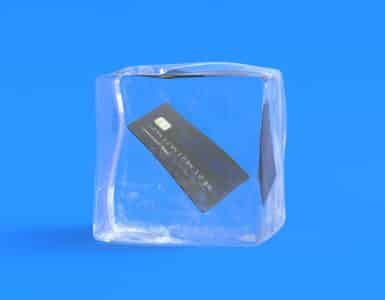You may have heard before that it’s not a good idea to max out your credit cards. There are a couple of excellent reasons for this. First, if you aren’t able to pay off the balance in full by the end of the grace period, you’ll end up having more money added to your balance in the form of accrued interest. You could also incur additional charges if you happen to go over your credit limit.
Another big reason leaving no room on a credit card could put you on financially shaky ground is that it means you are using all of the available credit you have on that card. In other words, your credit utilization would be 100 percent for that particular revolving credit account – something that has a negative impact on your credit score.
Total Available Credit and Utilization
Having an understanding of how credit scores are determined can help give you the needed tools to move your score up. The three-digit number that lenders use to determine your creditworthiness takes into account several factors including your payment history (do you always pay on time?) and your credit utilization ratio, which typically compares the amount of credit being used on all of your revolving credit cards accounts to the amount of total credit available to you.
Why Does the Utilization Rate Matter to Your Credit Score?
A low utilization ratio – under 30 percent – is great for your credit score because it means you have a lot of available credit but not much debt. (Financial institutions often see you as a better risk this way.) While it’s acceptable to have 30 percent utilization when trying to build up better credit, you should try to keep it as low as you can, with an amount below 10 percent if possible. For example, if you have a $1,000 limit on a card, try not to have more than $100 charged to the card at any given time.
As inflation stays higher than normal, millions of Americans have been struggling to pay off their high-interest credit cards, and carrying balances from month to month. In February 2023, the average utilization ratio for U.S. adults with revolving credit card debt was 30.3%, according to a report from VantageScore. That was down from an average high of 31% in December 2022.
Tips to Improve Your Total Available Credit
Besides paying your balances in full – and on time – every month, there are other strategies you can use to maintain or build up your total available credit. First up, don’t be tempted to cancel old credit cards that you have paid off. When you do that, it’s likely to hurt more than it helps, and can deliver a blow to your credit score.
Closing a card lowers the total amount of credit you have available, and can raise your utilization rate, depending on the balances you carry on other cards. Instead of canceling the card, keep the account active by using it to pay a specific bill every month. If the card in question comes with an annual fee, you can call your credit card issuer and ask to switch to another card with no annual fee.
If your current card issuer won’t switch you to a card with no annual fee, and you have offers for zero (or very low) interest rates cards on hand, contact the financial firm with the better offer and move your balance over. Then, set up an automatic payment for a few days before the due date to make sure you aren’t late with a payment. You’ll be glad you did!






